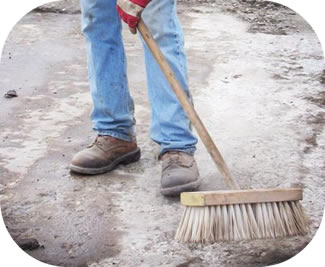Wear Supportive Footwear
 One reason many people develop Plantar Fasciitis is because their shoes do not provide the right support or heel cushioning and, therefore, allow the plantar fascia ligament to be pulled. Many professionals believe that it does not matter if you have an overpronation or underpronation, your Plantar Fascia needs support. Not only do shoes provide support but, if they are in good shape, they also absorb great amounts of shock that would otherwise be placed on the entire foot.
One reason many people develop Plantar Fasciitis is because their shoes do not provide the right support or heel cushioning and, therefore, allow the plantar fascia ligament to be pulled. Many professionals believe that it does not matter if you have an overpronation or underpronation, your Plantar Fascia needs support. Not only do shoes provide support but, if they are in good shape, they also absorb great amounts of shock that would otherwise be placed on the entire foot.
To find relief for your Plantar Fasciitis, you should consider finding a brand of shoes or shoe inserts (orthotics) that provide adequate support for your unique foot. For good advice and assistance in finding the perfect shoes for your foot and gait, you can visit a store that specializes in these types of shoes. Most of the time, stores will have a machine that can check out your feet and provide recommendations, as well as an educated staff that can offer advice.
There are many brands of shoes on the market, but not all of them are alike; each one is designed for certain types of feet or gaits. They are all also made from different materials, some of which absorb shock better. With some time, you should be able to find the right pair of shoes or inserts that will minimize stress on your Plantar Fascia. Don’t be afraid to return a pair, if it turns out that they are not working. It is better to keep trying different pairs than to concede to wearing one that doesn’t work for your heel. Another option for relief is to purchase some Foot Arch Band Supports, which are thin, lightweight bands that wrap around the foot and provide support pads under the arch.
Another important fact to remember is that shoes need to be replaced as soon as the soles, heels, or treads are compressed or worn down. If you are on your feet all day, especially on a hard floor, or you are an avid athlete, you should replace your shoes every few months. Most people claim that shoes can last anywhere from 300-500 miles. Some people do not like this idea because they feel that it is a costly, but the truth of the matter is that it would be less expensive and painful than suffering from this long-lasting condition of the heel, such as chronic Plantar Fasciitis.
**Bonus Tip:
For the sake of preventing or treating Plantar Fasciitis, it would be wise to take a break from hard or uneven running surfaces and find some soft running surfaces such as a track. It will limit the amount of shock the heel has to absorb.

